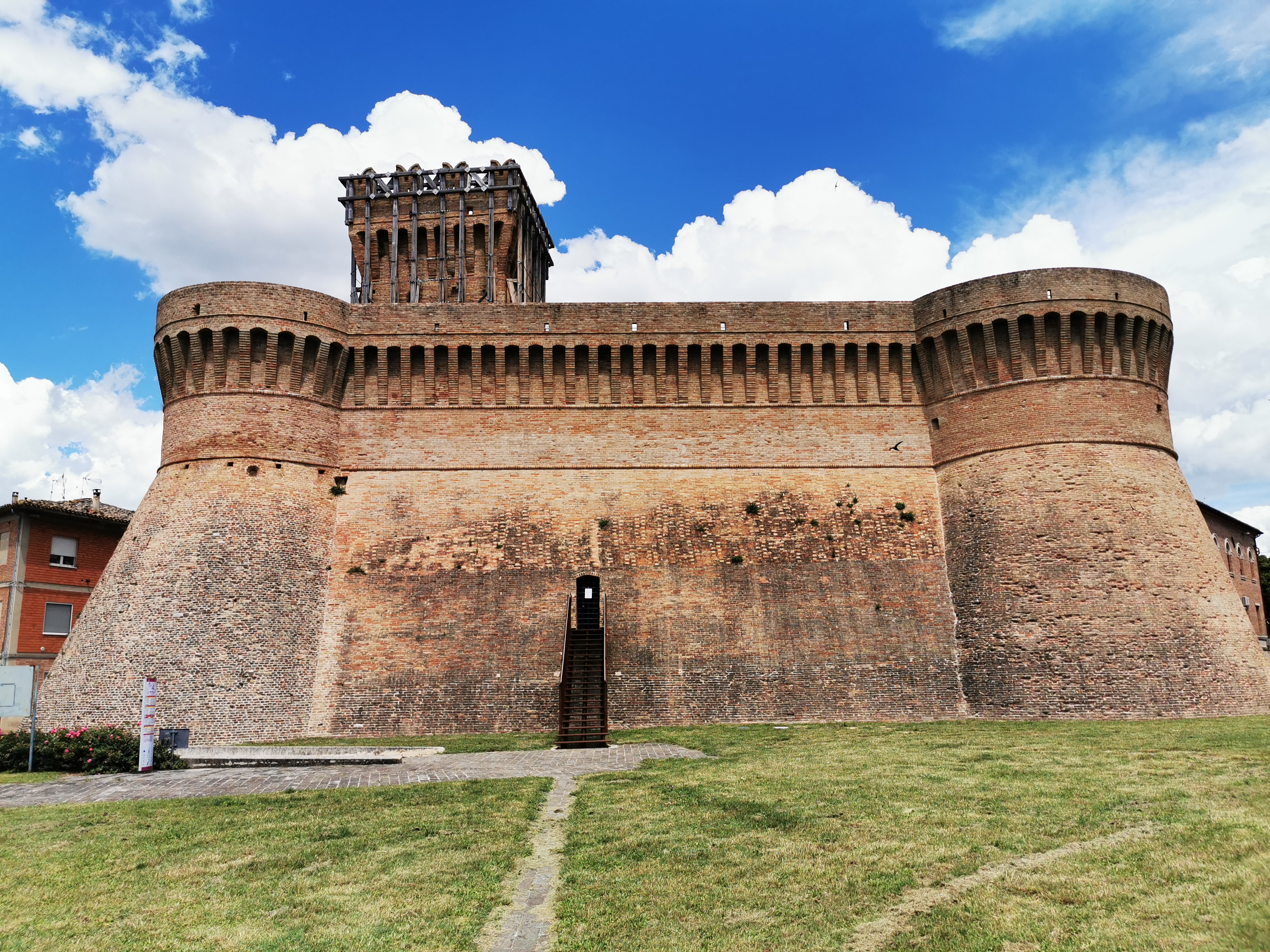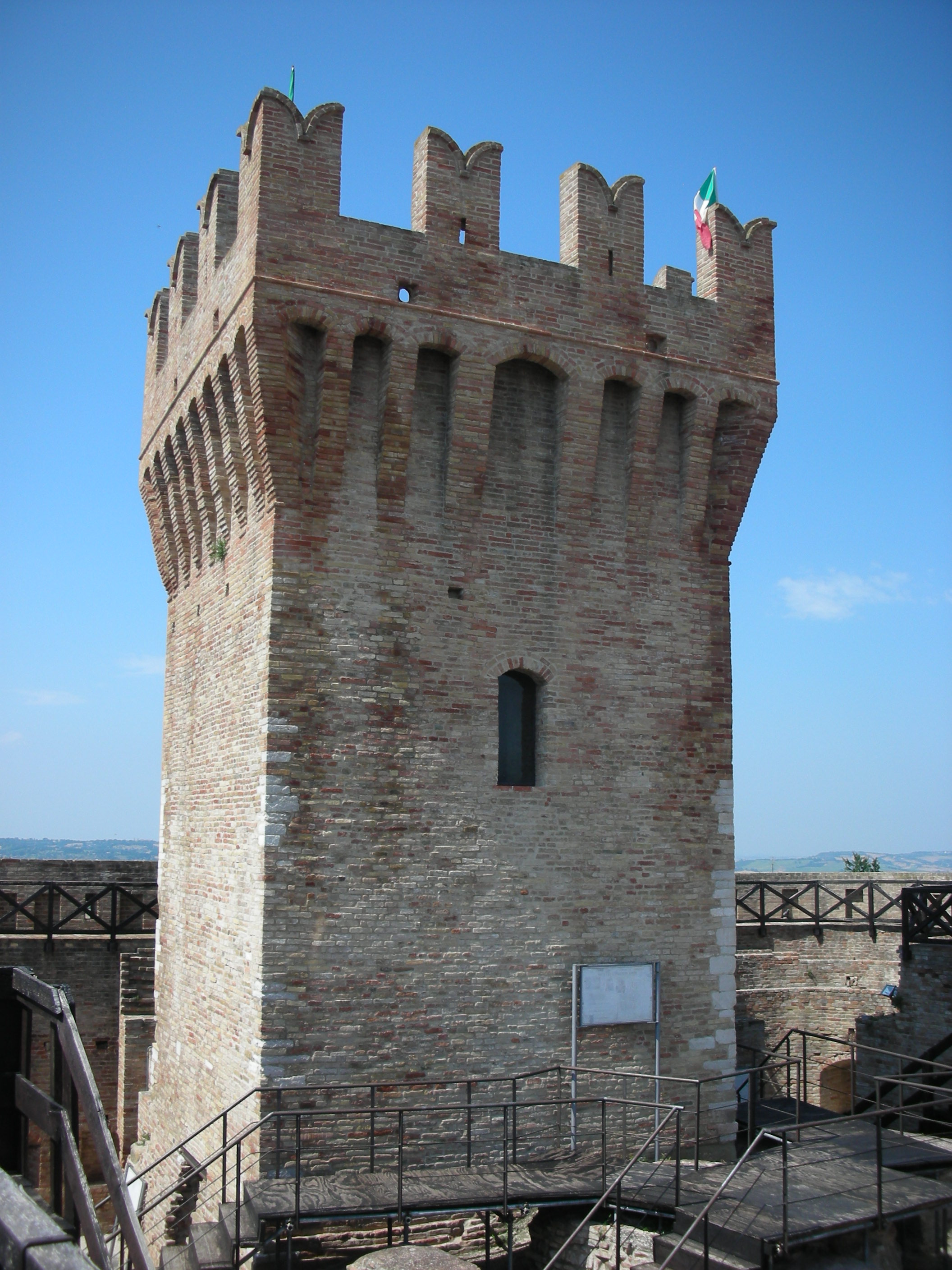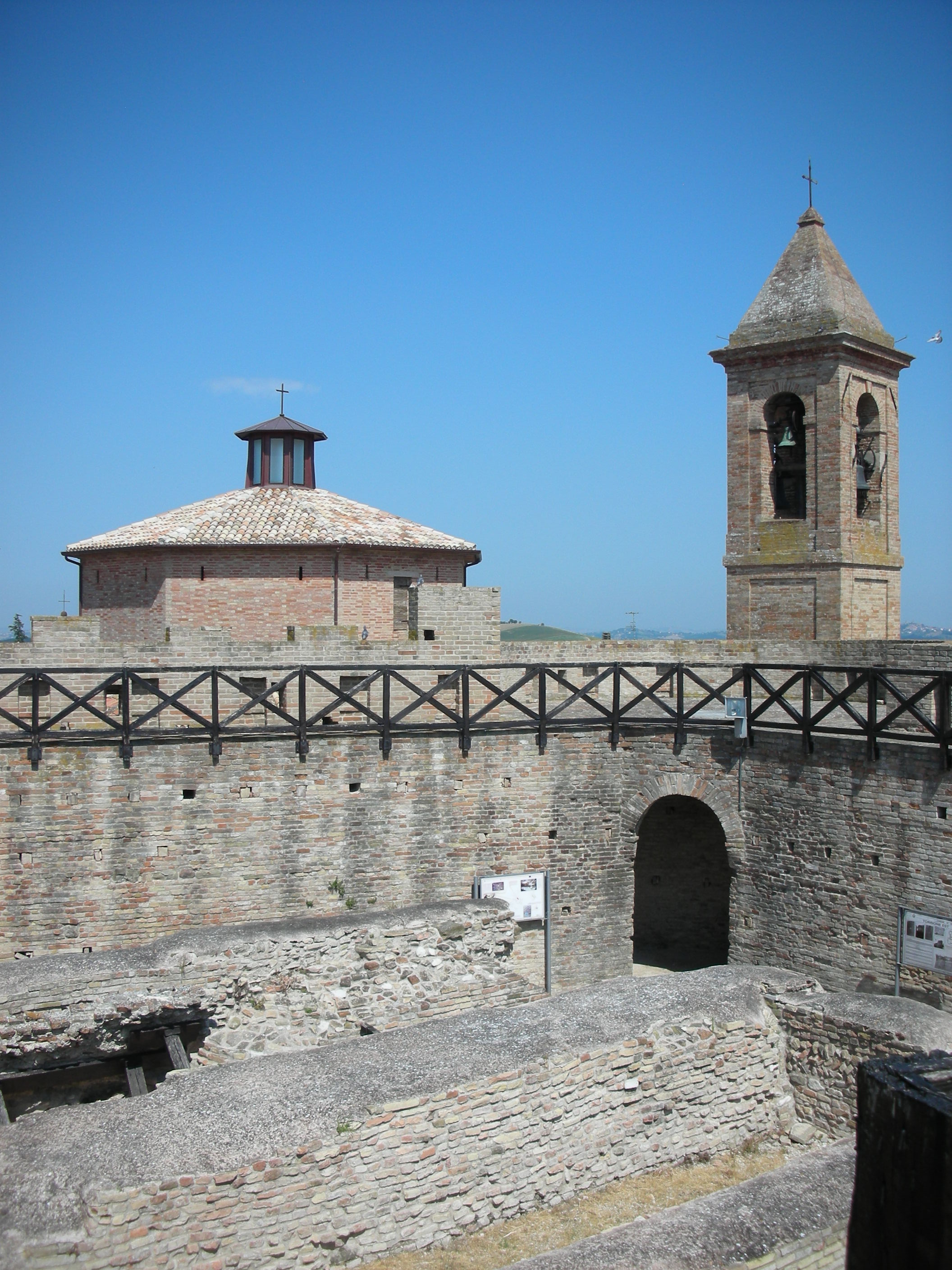Rocca Di Urbisaglia on:
[Wikipedia]
[Google]
[Amazon]
 The Rocca di Urbisaglia is a 16th-century military fortification, including ruins of medieval fortifications and Roman walls.
The Rocca di Urbisaglia is a 16th-century military fortification, including ruins of medieval fortifications and Roman walls.
Its imposing position, dominating the urban area and the
During the 13th century, several members of the Abbracciamontes started to sell their part of Urbisaglia to the
To prevent any rebellious acts from the citizens of Urbisaglia, who resented the external power over them, Tolentino asked the pope

Current entrance was a small door opening toward the outside of the fortress. It later became the only viable entrance after the anachronistic wooden ladder was destroyed.

Comune of Urbisaglia
*
{{coord, 43.1958, N, 13.3761, E, source:wikidata, display=title Urbisaglia Forts in Italy Urbisaglia
 The Rocca di Urbisaglia is a 16th-century military fortification, including ruins of medieval fortifications and Roman walls.
The Rocca di Urbisaglia is a 16th-century military fortification, including ruins of medieval fortifications and Roman walls.Its imposing position, dominating the urban area and the
Fiastra
Fiastra is a ''comune'' (municipality) in the Province of Macerata in the Italian region Marche, located about southwest of Ancona and about southwest of Macerata.
Fiastra borders the following municipalities: Camerino, Cessapalombo, Fiordimont ...
Valley below, suggests that the Arx
Arx, ARX, or ArX may refer to:
*ARX (Algorithmic Research Ltd.), a digital security company
*ARX (gene), Aristaless related homeobox
*ARX (operating system), an operating system
*ArX (revision control), revision control software
*Arx (Roman), a Ro ...
(the citadel, the most protected area of the town) or the Capitol of the Roman town Urbs Salvia was once located here. 
History
The population of ''Urbs Salvia'' took refuge all around the Arx - Capitolium stronghold after leaving the town, because of the Barbarian invasions. Here the ''Castro de Orbesallia'', ruled by the Abbracciamonte family, had its origins.During the 13th century, several members of the Abbracciamontes started to sell their part of Urbisaglia to the
comune
The (; plural: ) is a local administrative division of Italy, roughly equivalent to a township or municipality. It is the third-level administrative division of Italy, after regions ('' regioni'') and provinces (''province''). The can also ...
of Tolentino, who soon became the only owner of the town.To prevent any rebellious acts from the citizens of Urbisaglia, who resented the external power over them, Tolentino asked the pope
Alexander VI
Pope Alexander VI ( it, Alessandro VI, va, Alexandre VI, es, Alejandro VI; born Rodrigo de Borja; ca-valencia, Roderic Llançol i de Borja ; es, Rodrigo Lanzol y de Borja, lang ; 1431 – 18 August 1503) was head of the Catholic Churc ...
the permission to build a new fortress, which was already finished in 1507, when a 12 soldiers garrison was sent to guard the town.Mauro, Maurizio. La Rocca di Urbisaglia. Ravenna, 1994, p. 6-9
Structure
It has a trapezoidal shape with the longest side facing away from the town in order to better face potential attacks. There are four corner towers, a gate tower and akeep
A keep (from the Middle English ''kype'') is a type of fortified tower built within castles during the Middle Ages by European nobility. Scholars have debated the scope of the word ''keep'', but usually consider it to refer to large towers in c ...
where the garrison Tolentino had imposed on Urbisaglia resided. 
Keep
It was originally a watchtower. It has undergone several reconstructions between the 12th and 15th centuries and its current height (24 m/79 ft) is lower than it was initially. The top, currently crowned withGhibelline
The Guelphs and Ghibellines (, , ; it, guelfi e ghibellini ) were factions supporting the Pope and the Holy Roman Emperor, respectively, in the Italian city-states of Central Italy and Northern Italy.
During the 12th and 13th centuries, rival ...
merlons, was covered with a gable roof. The entrance to the keep
A keep (from the Middle English ''kype'') is a type of fortified tower built within castles during the Middle Ages by European nobility. Scholars have debated the scope of the word ''keep'', but usually consider it to refer to large towers in c ...
was at a higher level than the ground, so that the only way to enter it was through a wooden ladder which could be removed in case of danger.
Gate Tower
It was protected by the North tower and thekeep
A keep (from the Middle English ''kype'') is a type of fortified tower built within castles during the Middle Ages by European nobility. Scholars have debated the scope of the word ''keep'', but usually consider it to refer to large towers in c ...
and had its own musket
A musket is a muzzle-loaded long gun that appeared as a smoothbore weapon in the early 16th century, at first as a heavier variant of the arquebus, capable of penetrating plate armour. By the mid-16th century, this type of musket gradually d ...
embrasures. It once joined the fortress and the Western wall, later destroyed.
The entrance to the fortress was located at a higher level than the ground and could be reached through a wooden ladder which was removed in case of danger.Current entrance was a small door opening toward the outside of the fortress. It later became the only viable entrance after the anachronistic wooden ladder was destroyed.
West Tower
Along with the South Tower and the curtain wall connecting them, it was the external front of the fortress. It had two fire levels, the first one on the gun emplacement at the top, which was protected by merlons and embrasures, and the second one at ground level in thecasemate
A casemate is a fortified gun emplacement or armored structure from which artillery, guns are fired, in a fortification, warship, or armoured fighting vehicle.Webster's New Collegiate Dictionary
When referring to Ancient history, antiquity, th ...
with a reconstructed barrel vaulted ceiling and three embrasures.

South Tower
Facing enemy territory, it was the fortified tower with the highest exposure to risk. Similarly to the West Tower, it has two fire levels. Roman remains from Urbs Salvia are still visible at its base.East Tower
Located within the walls of the fortress, the function of this tower was not to defend but rather to store provisions and supplies. In case of a siege it was used as living quarters: that's the reason why, unlike the other ones, the East tower is covered with a gable roof. It is also the only tower where the groined vault has remained intact. By the embrasures below the vault, there are vent-holes whose function was to let out smoke and gases produced by artillery discharge.North Tower
Enclosed within the fortress's walls, its function, unlike the East Tower, was to defend the North-eastern front in case attackers were to break into the city walls and spread throughout the castle. There are three embrasures at ground level, while the vault which used to cover the chamber is no longer present.Cistern
It was built to catch and store rainwater which was then used for the daily needs of the fortress occupants.See also
* Urbisaglia *Archaeological Park of Urbs Salvia
The Archaeological Park of Urbs Salvia is situated in the ''comune'' of Urbisaglia (Province of Macerata), in the Marches, Italy. It is the largest archaeological park in the region.
History
The city, located in the V Regio Picenum, was fou ...
Notes
Sources
* Bacchielli L. - Ch. Delplace - W. Eck - L. Gasperini - G. Paci. ''Studi su Urbisaglia romana. Supplementi a PICUS''. Tivoli, 1995. * Belloni, Beniamino. ''La Rocca medievale di Urbisaglia Bonservizi''. Tolentino, 1939. * Ferranti, Giuseppe. ''Guida al territorio di Urbisaglia''. Pro Manoscritto a cura di Urbsalviambiente. Urbisaglia, 1994. * Mauro, Maurizio. ''La Rocca di Urbisaglia''. Ravenna, 1994. * Salvucci Miria - Salvucci Giovanna (et al. ). ''Urbisaglia. Urbs Salvia, Capolavori in corso''. Urbisaglia, 2003.External links
*Comune of Urbisaglia
*
{{coord, 43.1958, N, 13.3761, E, source:wikidata, display=title Urbisaglia Forts in Italy Urbisaglia